North Konami provides MXene materials (customizable)
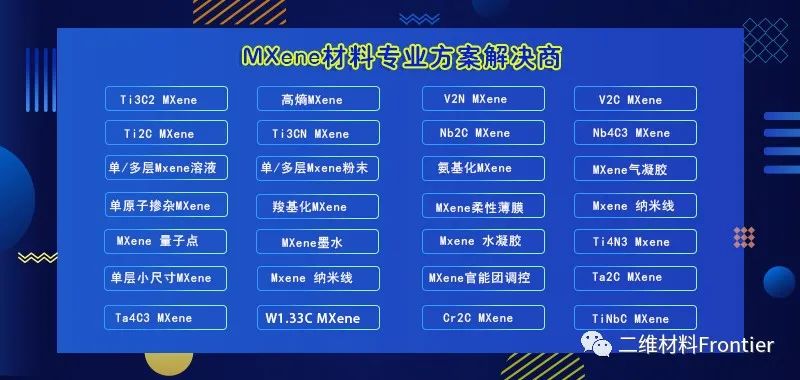
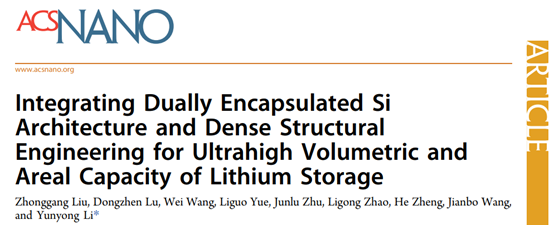
Research abstract
Si anodes with high theoretical capacity have good application prospects in lithium battery applications. However, its large volume expansion (~300%) and poor electrical conductivity require the simultaneous introduction of low-density conductive carbon and nano-sized Si to overcome the above problems, however, this results in lower volume capacity. In view of this, the research team of Professor Li Yunyong of Guangdong University of Technology published the latest research results in "ACS Nano", and proposed an integration strategy to realize the double-coated structure of Si and the tight structure engineering to construct 3D highly stacked Ti3C2Tx MXene and graphene. Double-clad Si structure (HD-Si@Ti3C2Tx@G). Benefiting from the high density, high conductivity, and 3D compact double-coated Si structure, the as-prepared HD-Si@Ti3C2Tx@G anode exhibits a high performance of 5206 mAh cm-3 at 0.1 A g-1. The volume specific capacity, the mass specific capacity is 2892 mAh g-1, the area specific capacity is 17.9 mAh cm-2 with excellent cycle stability. Combined with in situ TEM technology and kinetic and structural stability analysis, it is proved that such excellent performance is mainly due to the double coating of Si-structured 3D conductive plasticity MXene and graphene, which can promote the rapid transport of electrons and ions and effective volume buffering. Good electrolyte permeability with thick electrodes.
Graphical guide

Figure 1. Synthesis process of HD-Si@Ti3C2Tx@G and the mechanism of lithium storage in thick electrodes.
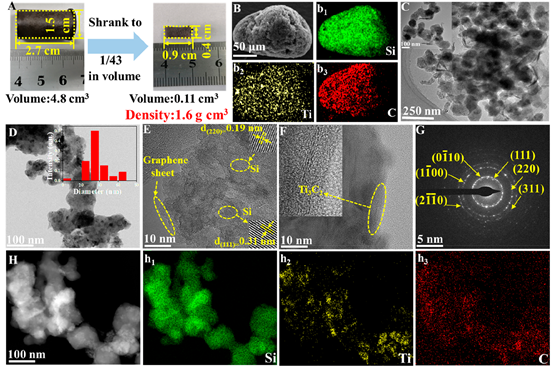
Figure 2. Optical photographs of HD-Si@Ti3C2Tx@G before and after calcination; microstructure characterization of HD-Si@Ti3C2Tx@G: SEM, TEM and element mapping.

Figure 3. XRD, Raman and XPS characterization results of HD-Si@Ti3C2Tx@G.
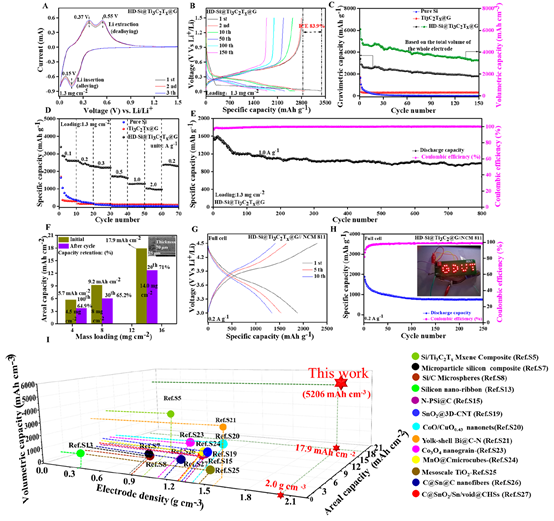
Figure 4. Electrochemical properties of HD-Si@Ti3C2Tx@G.
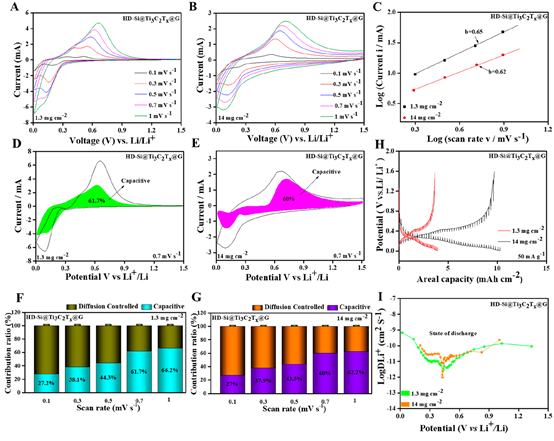
Figure 5. Free energy change versus PDOS for the ORR reaction.
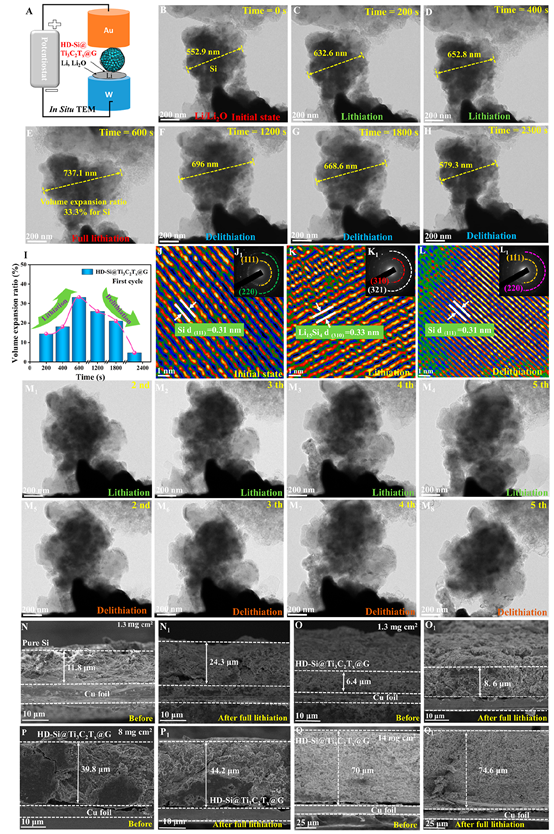
Figure 6. The microstructure and morphology evolution of HD-Si@Ti3C2Tx@G anode under different lithium intercalation states were analyzed by in-situ TEM and ex-situ SEM.
Summarize
Benefiting from the highly stacked structure, high conductivity and double coating of Si structure, the as-prepared HD-Si@Ti3C2Tx@G anode exhibits ultra-high volume specific capacity, and more importantly, the electrode loading reaches 14 mg In the case of cm-2, a higher surface capacity is achieved. The full cells assembled based on HD-Si@Ti3C2Tx@G//NCM811 also exhibited excellent cycling stability, indicating their potential for practical applications. The 3D hydrophilic MXene and structural structure can provide good permeability to the electrolyte. Therefore, the synergistic effect of graphene and MXene enables the composite Si electrode to exhibit excellent electrochemical performance. This work provides a simple and effective dual coating strategy for improving the volume and areal specific capacity of alloy-type anodes for a wide range of applications.
Literature link
https://doi.org/10.1021/acsnano.1c11298
This information comes from the Internet for academic exchange only. If there is any infringement, please contact us to delete it immediately.










